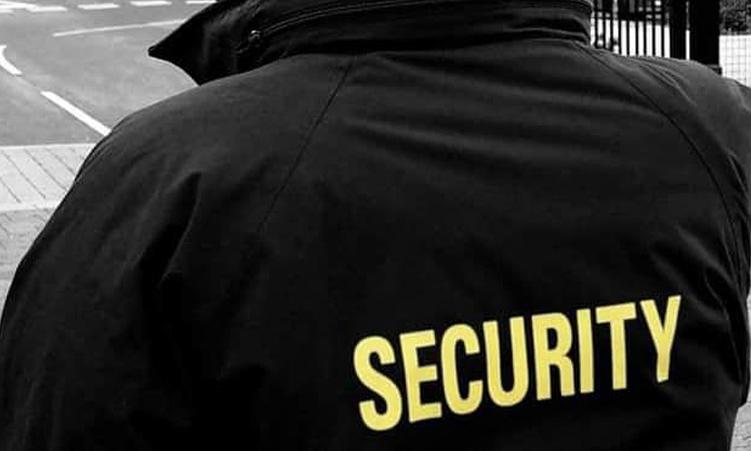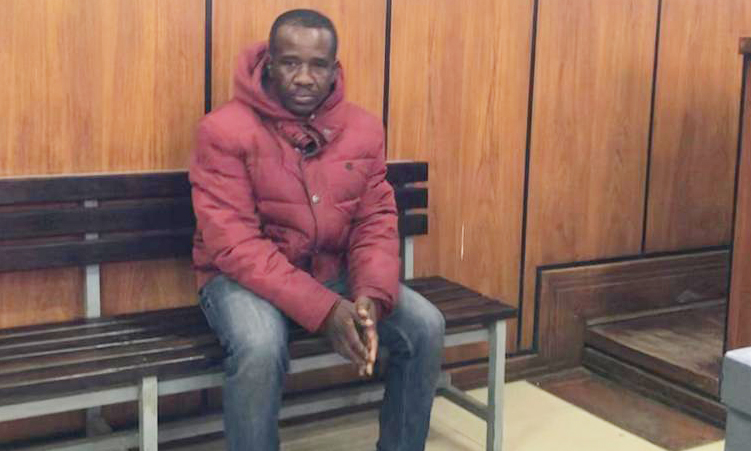FIFTY-ONE white crosses erected by unknown individuals next to the Windhoek Reiterdenkmal (monument) is a violation of the rights of others and could spark counter actions, Culture and Sport Minister Willem Konjore argued yesterday.
In a statement in the National Assembly, Konjore told MPs he had visited the site on Wednesday and inspected the white-painted crosses with names written on them. Government intends to move the statue a few metres to make way for a liberation struggle museum to cost N$8 million.Many Herero and Nama people are opposed to the museum because, in their view, it would only glorify the actions of the ruling Swapo Party members and ignore other sections of the Namibian population who already resisted oppression a century ago.”Government wants to wipe out our rightful place in the liberation history by erecting this museum on the very soil where our ancestors perished in concentration camps,” a source in these circles told The Namibian.”Hundreds of makeshift huts with Nama and Herero prisoners surrounded the Alte Feste then,” the source said.According to Konjore, “The people who are causing unnecessary panic by erecting crosses next to the Reiterdenkmal are violating the rights of others and are depriving other Namibians of an opportunity to express their sentiments in a mature manner.We must not take the law into our own hands or try to make controversial statements on this matter as we are dealing with our painful past, which, if allowed, might have serious repercussions.””We must be united and follow the policy of national reconciliation as we approach this sensitive matter with dignity, pride and harmony,” the Minister said.”We (Government) never said we shall disregard the brave sons and daughters that perished in the concentration camps, one camp having been exactly at the very spot of this monument for Herero and Nama war prisoners and around the Alte Feste between 1904 and 1908,” Konjore added.The names of those heroes would be honoured with all the respect they deserved, he said.”Everybody shall be involved in this process with thorough consultations and representations.”One of the descendants of imprisoned Herero fighters between 1904 and 1908, Katuutire Kaura, is opposed to moving the monument.Kaura, who is the leader of the DTA opposition party, tabled a motion in Parliament recently, saying the Reiterdenkmal should remain put as a symbol of the common history of colonial Germany and the Herero and Nama resistance.The monument was a Windhoek landmark, formed an architectural unit with the Christuskirche and the Alte Feste and was the most frequented tourism attraction in the city, Kaura said.Government intends to move the statue a few metres to make way for a liberation struggle museum to cost N$8 million.Many Herero and Nama people are opposed to the museum because, in their view, it would only glorify the actions of the ruling Swapo Party members and ignore other sections of the Namibian population who already resisted oppression a century ago.”Government wants to wipe out our rightful place in the liberation history by erecting this museum on the very soil where our ancestors perished in concentration camps,” a source in these circles told The Namibian.”Hundreds of makeshift huts with Nama and Herero prisoners surrounded the Alte Feste then,” the source said.According to Konjore, “The people who are causing unnecessary panic by erecting crosses next to the Reiterdenkmal are violating the rights of others and are depriving other Namibians of an opportunity to express their sentiments in a mature manner.We must not take the law into our own hands or try to make controversial statements on this matter as we are dealing with our painful past, which, if allowed, might have serious repercussions.””We must be united and follow the policy of national reconciliation as we approach this sensitive matter with dignity, pride and harmony,” the Minister said.”We (Government) never said we shall disregard the brave sons and daughters that perished in the concentration camps, one camp having been exactly at the very spot of this monument for Herero and Nama war prisoners and around the Alte Feste between 1904 and 1908,” Konjore added.The names of those heroes would be honoured with all the respect they deserved, he said.”Everybody shall be involved in this process with thorough consultations and representations.”One of the descendants of imprisoned Herero fighters between 1904 and 1908, Katuutire Kaura, is opposed to moving the monument.Kaura, who is the leader of the DTA opposition party, tabled a motion in Parliament recently, saying the Reiterdenkmal should remain put as a symbol of the common history of colonial Germany and the Herero and Nama resistance.The monument was a Windhoek landmark, formed an architectural unit with the Christuskirche and the Alte Feste and was the most frequented tourism attraction in the city, Kaura said.
Stay informed with The Namibian – your source for credible journalism. Get in-depth reporting and opinions for
only N$85 a month. Invest in journalism, invest in democracy –
Subscribe Now!









